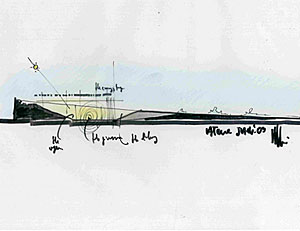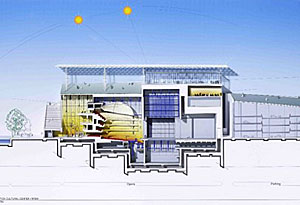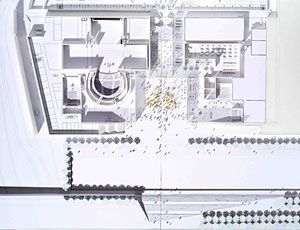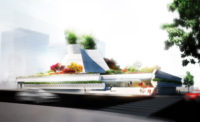


The Olympic Flame has not sparkled in Athens since 2004, yet the city continues to transform itself as a result of the international sporting event.
Renzo Piano Building Workshop (RPBW) has been hired to design the Stavros Niarchos Foundational Cultural Center (SNFCC), which will be located in the Faliron Delta, the seaside district in south Athens where many Olympic facilities were constructed. SNFCC, a 13-year-old organization that underwrites charitable activities supporting Greek culture, selected RPBW to design the center last year from a three-firm shortlist.
The $580 million building, which is expected to open in 2015, is the first example of a public-private partnership in the Greek State. Measuring approximately 538,000 square feet, it will house the National Library of Greece and the Greek National Opera, both of which are currently located in the city center. Those facilities, according to RPBW partner Giorgio Bianchi, are obsolete. “Scholars use the library, but today libraries are centers for communication and exchange,” he says. The opera house is a converted movie theater, he adds, and it does not have all the stage requirements that qualify it for hosting international circuit productions.
The new facility—which will be largely embedded in a hillside and surrounded by parkland—will feature a 1,400-seat main auditorium and a black-box theater. The 235,000-square-foot library component will include stacks as well as classes, meeting rooms, and corollary spaces. On the top floor, a meeting area and study room will boast views of the Aegean Sea and, in the opposite direction, a vista that includes the Acropolis.
The building’s roof will be covered in photovoltaics, which will operate in concert with geothermal heating and cooling and natural ventilation to win the project LEED certification or better. Of the sustainable strategies, Bianchi says, “the building will be independent of the grid during normal functions, and will only need energy for staging [large-scale performances like] La Traviata.” The destination should be accessible by eco-friendly public transit, too, as soon as the city makes good on another Olympic Games promise—completing a nearby subway stop.



Post a comment to this article
Report Abusive Comment